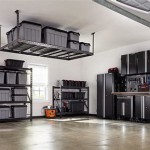Choosing The Right Paint For Your Garage Doors
Selecting the appropriate paint for garage doors is a critical aspect of home maintenance and aesthetics. Garage doors are constantly exposed to the elements, enduring temperature fluctuations, sunlight, rain, and snow, making them susceptible to wear and tear. The right paint not only enhances the visual appeal of the home’s exterior but also provides a protective barrier against these environmental factors, extending the lifespan of the garage door. A well-chosen paint can prevent rust on metal doors, resist warping and cracking on wooden doors, and maintain the structural integrity of various materials.
This article will explore the key considerations in choosing the right paint for garage doors, taking into account the material of the door, the climate, the desired finish, and the application process. Properly researching and understanding these factors will ensure a durable, long-lasting, and aesthetically pleasing result.
Understanding Garage Door Materials
The type of material the garage door is made of is the most significant factor in determining the type of paint that should be used. Different materials have varying properties and require specific types of coatings to ensure proper adhesion, flexibility, and protection.
Metal Garage Doors: Metal doors, often constructed from steel or aluminum, are popular for their durability and low maintenance requirements. However, they are prone to rust and corrosion, especially in areas with high humidity or coastal climates. For metal doors, a rust-inhibiting primer is essential before applying any paint. This primer creates a protective layer that prevents rust from forming underneath the paint, ensuring a longer-lasting finish. Acrylic latex paints are generally recommended for metal doors because they are flexible, durable, and resistant to fading and cracking. Oil-based paints can also be used, but they tend to become brittle over time and may not withstand the expansion and contraction of the metal due to temperature changes. Furthermore, choosing a paint specifically formulated for exterior metal surfaces will provide added protection and longevity.
Wood Garage Doors: Wood garage doors offer a classic and elegant look, but they require more maintenance than metal doors. Wood is susceptible to moisture damage, rot, and insect infestation. Therefore, choosing a paint that provides excellent waterproofing and protection against these elements is crucial. Oil-based paints are a popular choice for wood garage doors because they penetrate the wood fibers, creating a strong and durable barrier against moisture. Acrylic latex paints are also suitable, especially if they are specifically formulated for exterior wood surfaces. Before painting a wood garage door, it's essential to properly prepare the surface by sanding and priming it. Sanding removes any loose or damaged paint and creates a smooth surface for better adhesion. Priming seals the wood and prevents it from absorbing too much paint, ensuring a uniform and long-lasting finish.
Composite Garage Doors: Composite garage doors are made from a combination of materials, such as wood fibers and resins, offering a balance of aesthetics and durability. These doors are less susceptible to moisture damage and rot compared to traditional wood doors, but they still require proper protection. Acrylic latex paints are generally recommended for composite doors due to their flexibility and durability. These paints adhere well to the composite material and provide excellent resistance to fading and cracking. It's essential to follow the manufacturer's recommendations for preparing and painting the composite door to ensure optimal results. In some cases, a specific primer may be required to ensure proper adhesion and prevent any compatibility issues.
Considering Climate and Environmental Factors
The local climate and environmental conditions play a significant role in determining the best paint for the garage door. Extreme temperatures, humidity, sunlight, and saltwater exposure can all impact the performance and longevity of the paint. Choosing a paint that is specifically formulated to withstand these conditions is crucial for ensuring a durable and long-lasting finish.
Hot and Sunny Climates: In areas with hot and sunny climates, the paint on the garage door is exposed to high levels of ultraviolet (UV) radiation, which can cause fading, cracking, and peeling. Acrylic latex paints are a good choice for these climates because they are highly resistant to UV damage and can maintain their color and finish for a longer period. Look for paints that are specifically labeled as UV-resistant or exterior-grade. Additionally, lighter colors tend to reflect more sunlight and heat, reducing the stress on the paint and the garage door itself.
Humid and Rainy Climates: In areas with high humidity and frequent rainfall, the garage door is constantly exposed to moisture, which can lead to rust, rot, and mildew growth. Oil-based paints are a good choice for these climates because they provide excellent waterproofing and protection against moisture damage. However, acrylic latex paints are also suitable if they are specifically formulated for exterior use and contain mildew-resistant additives. Proper surface preparation, including cleaning and priming, is essential to prevent moisture from penetrating the paint and causing damage. Ensure the paint is applied during dry weather and that the garage door is completely dry before painting.
Coastal Climates: Coastal climates are characterized by high humidity, saltwater exposure, and strong winds, which can be particularly harsh on garage doors. Saltwater can accelerate corrosion on metal doors and degrade the finish on wood and composite doors. Choosing a paint that is specifically formulated for marine environments is crucial for providing maximum protection. These paints typically contain rust inhibitors and UV stabilizers to withstand the corrosive effects of saltwater and sunlight. Epoxy-based paints are also a good option for coastal climates because they provide excellent adhesion and resistance to chemicals and abrasion. Regular maintenance, including washing the garage door with fresh water to remove salt deposits, can further extend the lifespan of the paint.
Selecting the Right Paint Finish and Application Techniques
The desired paint finish and the application techniques employed can significantly impact the final appearance and durability of the garage door. Different finishes offer varying levels of sheen, durability, and ease of maintenance. Proper application techniques are essential for ensuring a smooth, uniform, and long-lasting finish.
Paint Finishes: Paint finishes are typically categorized by their level of sheen, ranging from flat to high-gloss. Flat finishes have a matte appearance and are good at hiding imperfections, but they are less durable and more difficult to clean. Satin finishes offer a balance of durability and aesthetics, providing a subtle sheen that is easy to clean. Semi-gloss finishes are more durable and easier to clean than satin finishes, but they also highlight imperfections more. High-gloss finishes are the most durable and easiest to clean, but they have a very shiny appearance that may not be suitable for all garage doors. For garage doors, satin or semi-gloss finishes are generally recommended because they offer a good balance of durability, aesthetics, and ease of maintenance.
Surface Preparation: Proper surface preparation is essential for ensuring that the paint adheres properly and provides a long-lasting finish. Before painting, the garage door should be thoroughly cleaned to remove any dirt, grease, or loose paint. This can be done with a mild detergent and water, followed by rinsing and drying. Any rust or corrosion should be removed with a wire brush or sandpaper. For wood doors, any damaged or rotting wood should be repaired or replaced. After cleaning, the surface should be lightly sanded to create a smooth and uniform surface for better adhesion. Finally, a primer should be applied to seal the surface and provide a base for the paint. Choose a primer that is compatible with the type of paint being used and the material of the garage door.
Application Techniques: The paint can be applied using a brush, roller, or sprayer. Brushes are good for detailed work and small areas, but they can leave brush marks if not used properly. Rollers are good for large, flat surfaces and provide a smooth, uniform finish. Sprayers are the fastest and most efficient way to apply paint, but they require more skill and experience to use properly. When using a brush or roller, apply the paint in thin, even coats, overlapping each stroke slightly to avoid streaks. Allow each coat to dry completely before applying the next coat. When using a sprayer, hold the sprayer at a consistent distance from the surface and move it in a smooth, even motion. Avoid applying too much paint in one area, as this can lead to drips and runs. Always follow the manufacturer's instructions for the specific paint being used.
In summary, selecting the right paint for garage doors requires careful consideration of the door's material, the environment, and the desired finish. Taking the time to research and properly prepare and paint the garage door will ensure a beautiful and long-lasting result, enhancing the curb appeal and protecting this important part of the home.

From Basic To Bold Choosing The Right Color For Your Garage Door Crews

Choosing The Best Paint Color For Your Garage Door

What Color Should I Paint My Garage Door Choosing The Right For Your Home

Can You Paint A Roll Up Garage Door Breathe New Life Into Your

How To Paint Metal Garage Doors Five Star Painting

Choosing The Best Garage Door Paint Color For Your Home Fagan Systems

Ultimate Garage Door Painting Guide Steps Materials Needed

5 Simple Guidelines For Choosing Garage Paint Colors

Choosing The Best Garage Door Paint Color For Your Home Fagan Systems

Tips For Painting A New Garage Door
Related Posts








